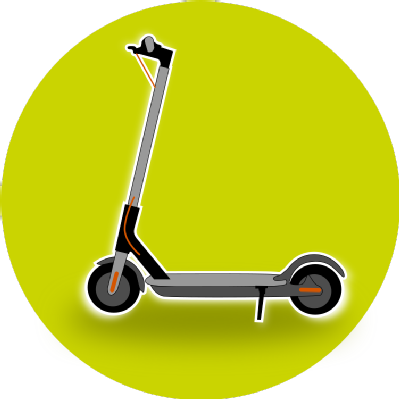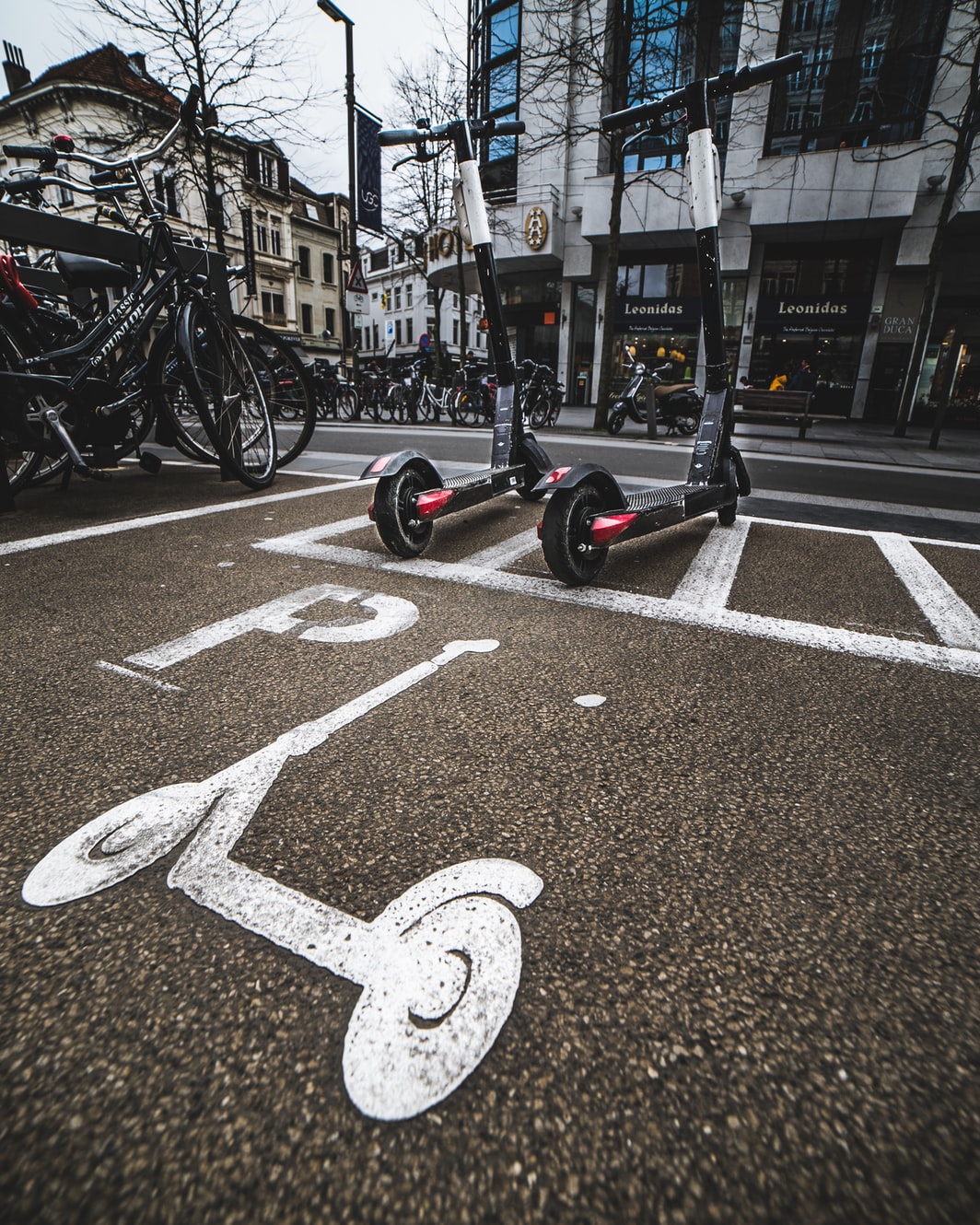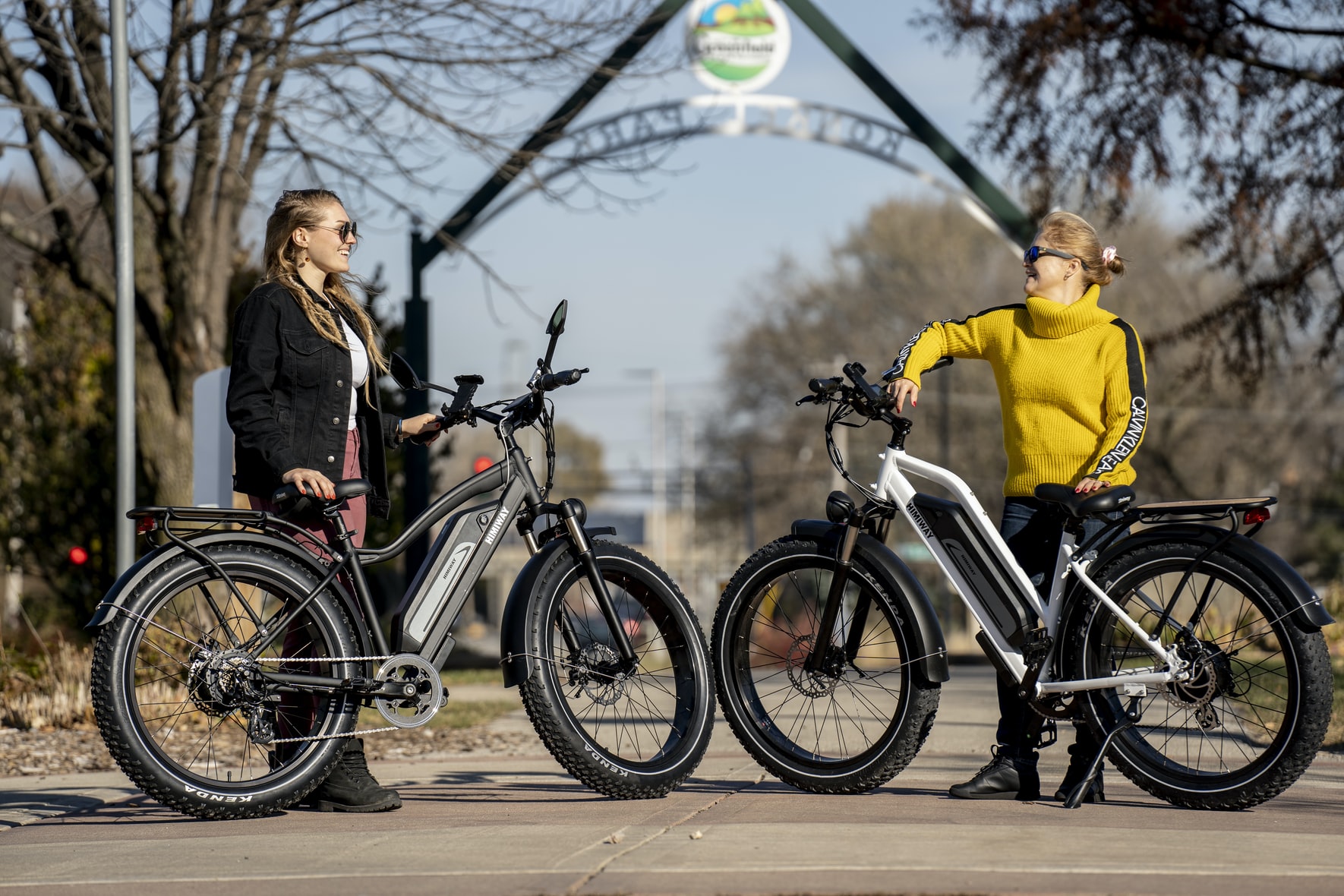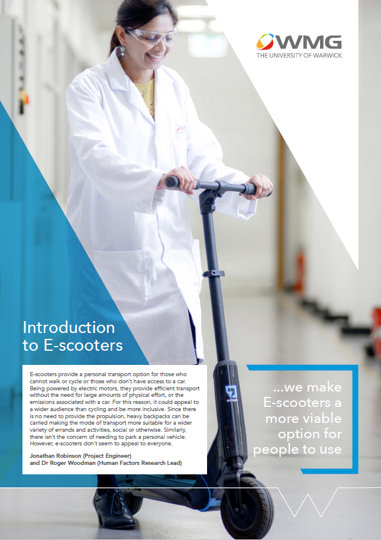Micromobility
Micromobility - How are you getting around?
 |
How many of you have an e-scooter? Or perhaps you seen them zipping about the place? Or stood next to bus stops ready for hire? e-scooters hold a lot of potential for helping us get around cities and reach our destinations but not everyone is excited about them! Being electric vehicles they don't emit any noxious gases in our cities and if we use green energy production they could be really good for our environment. So why don't people like them? What are they good for? How can we make them better? Let's find out with some of our experts at WMG. |
Part 1 - Introduction
What is micromobility?
Micromobility - as the name suggests - describes anything that can help us move around but is still quite small. You couldn't pick up a car or a motorbike and carry it easily but they do allow you to travel long distances quickly and comfortably. Meanwhile a push bike might be reasonably light weight and you might be able to carry it short distances but they can be very hard work - especially on hills!
Micromobility is about finding the best of both - can we have a small, lightweight vehicle like a push bike that can help us travel comfortably over long distances?
Typically we are looking at small vehicles like bikes or scooters and adding modern technology like batteries and motors to them to make a whole new way to get around.
Image via unsplash.com
What is an e-scooter?
An e-scooter is just like a normal scooter - a set of handlebars and a platform for you to stand on - but instead of having to push it along with your foot there is a battery and a motor installed to propel you around.

Image via unsplash.com
Part 2 - Reluctance
Why would people not want to use an e-scooter?
Jonathan Robinson and Dr Roger Woodman have written this article and you can read the whole thing by clicking the front page or this link.
Jonathan says in the article: "[e-scooters] could be used in seaside towns to provide a refreshing way of exploring the coast. They could be used in airports to help the rush to the gates that often occurs. They can be used in shopping centres to ease the aching feet after a long day of browsing. They could be adapted and used in forest trails, opening the natural spaces to a greater variety of people. This both opens currently available activities to a wider group of people and creates new opportunities for social activities or personal travel which were not there previously."
And he asks: "Where would you use your e-scooter?"
Part 3 - What's next?
Can we solve some of the issues Jonathan raised? Where will e-scooters be used? How can we make sure there is always one available where you expect to find one? And more than that - make sure it works too!


